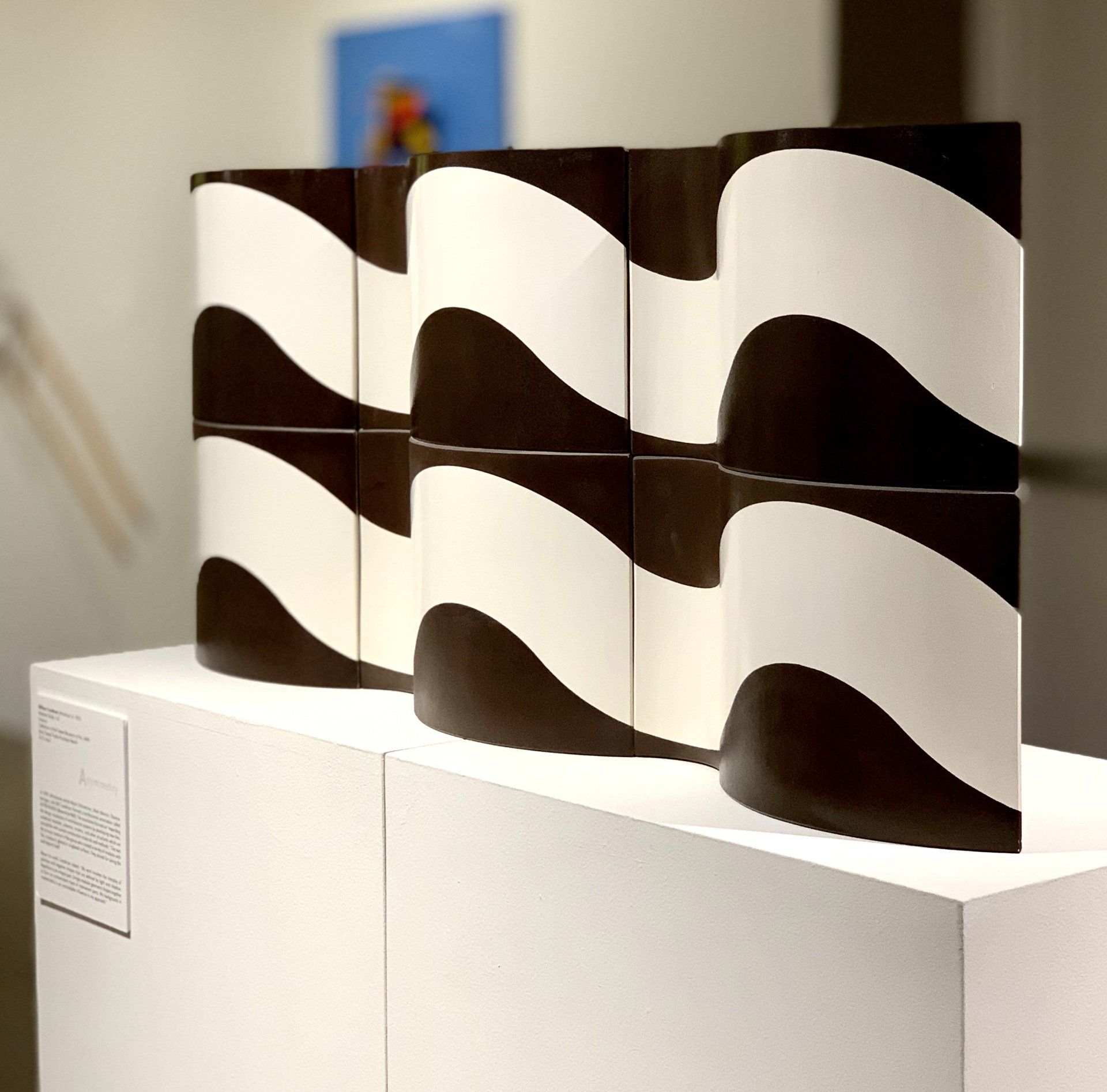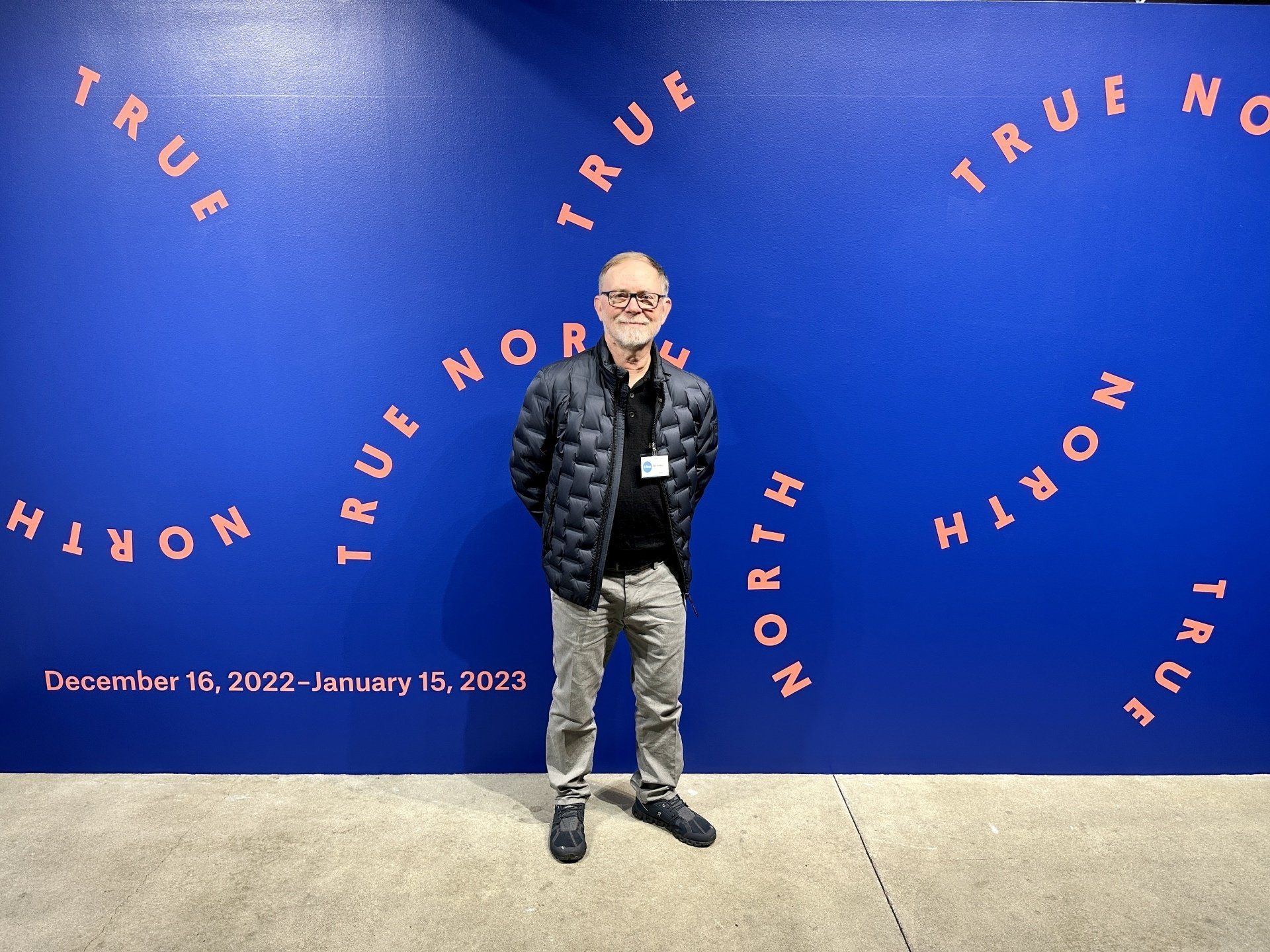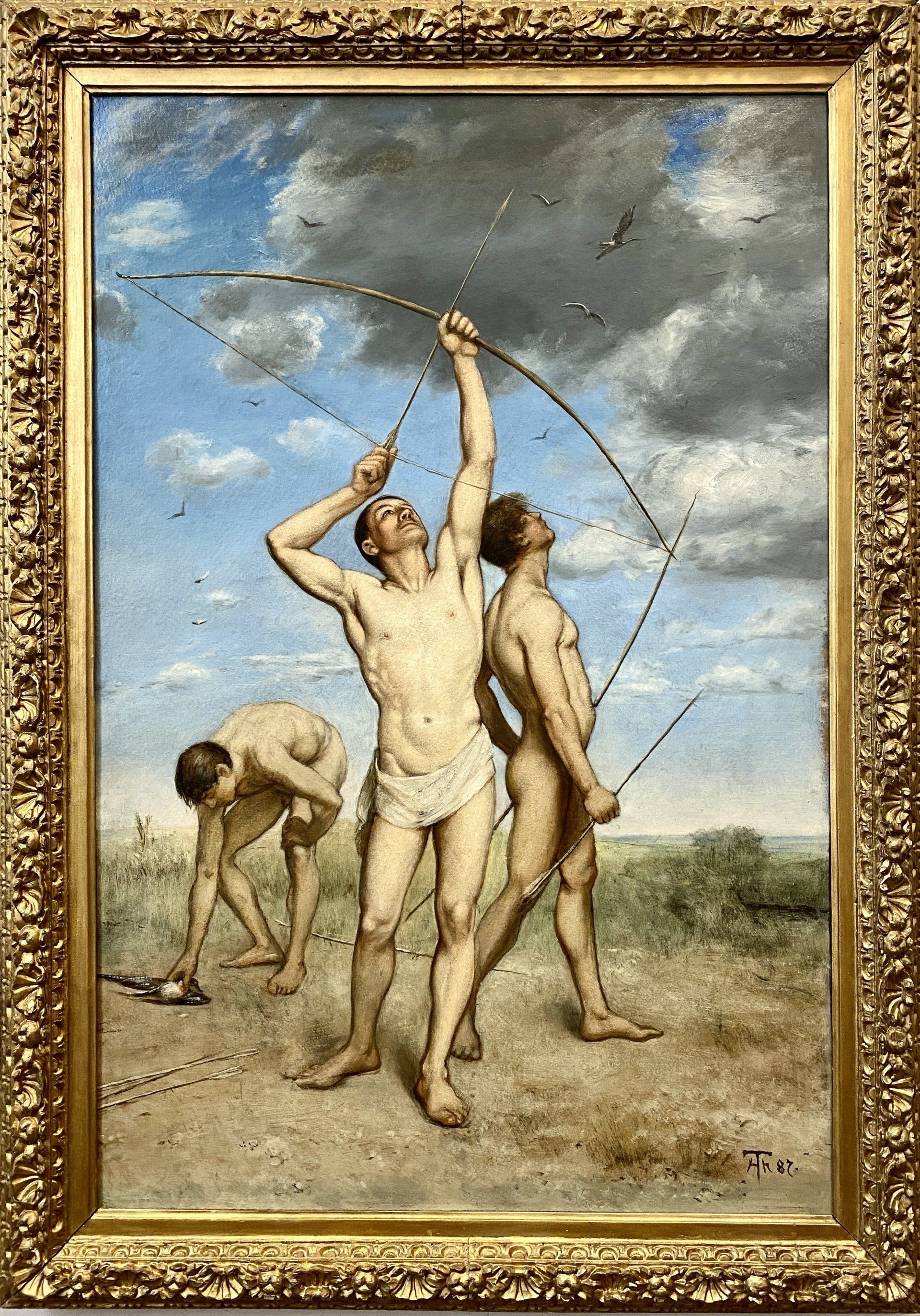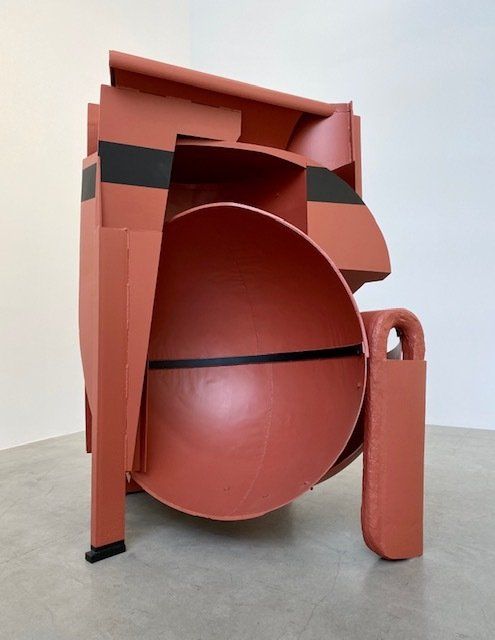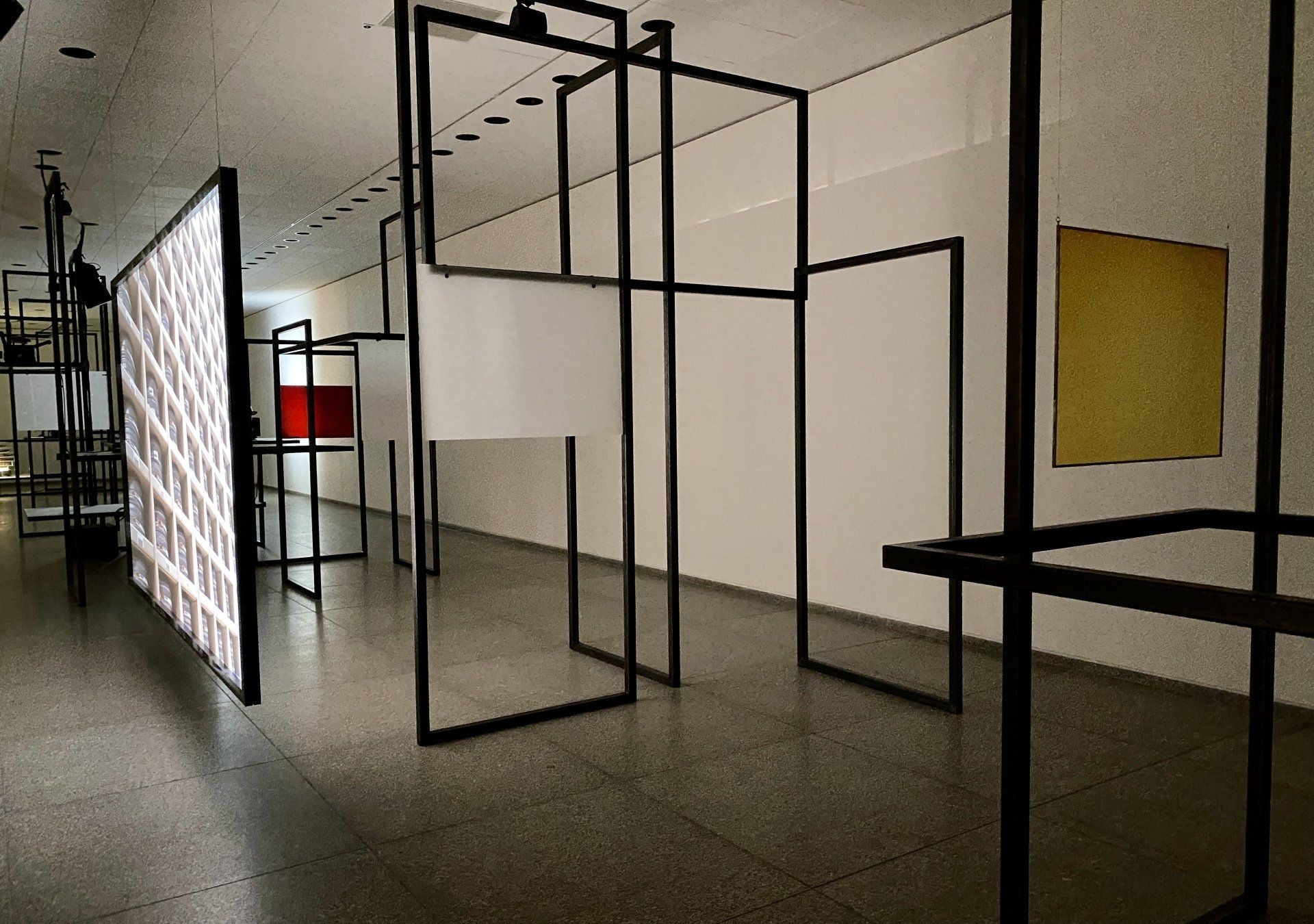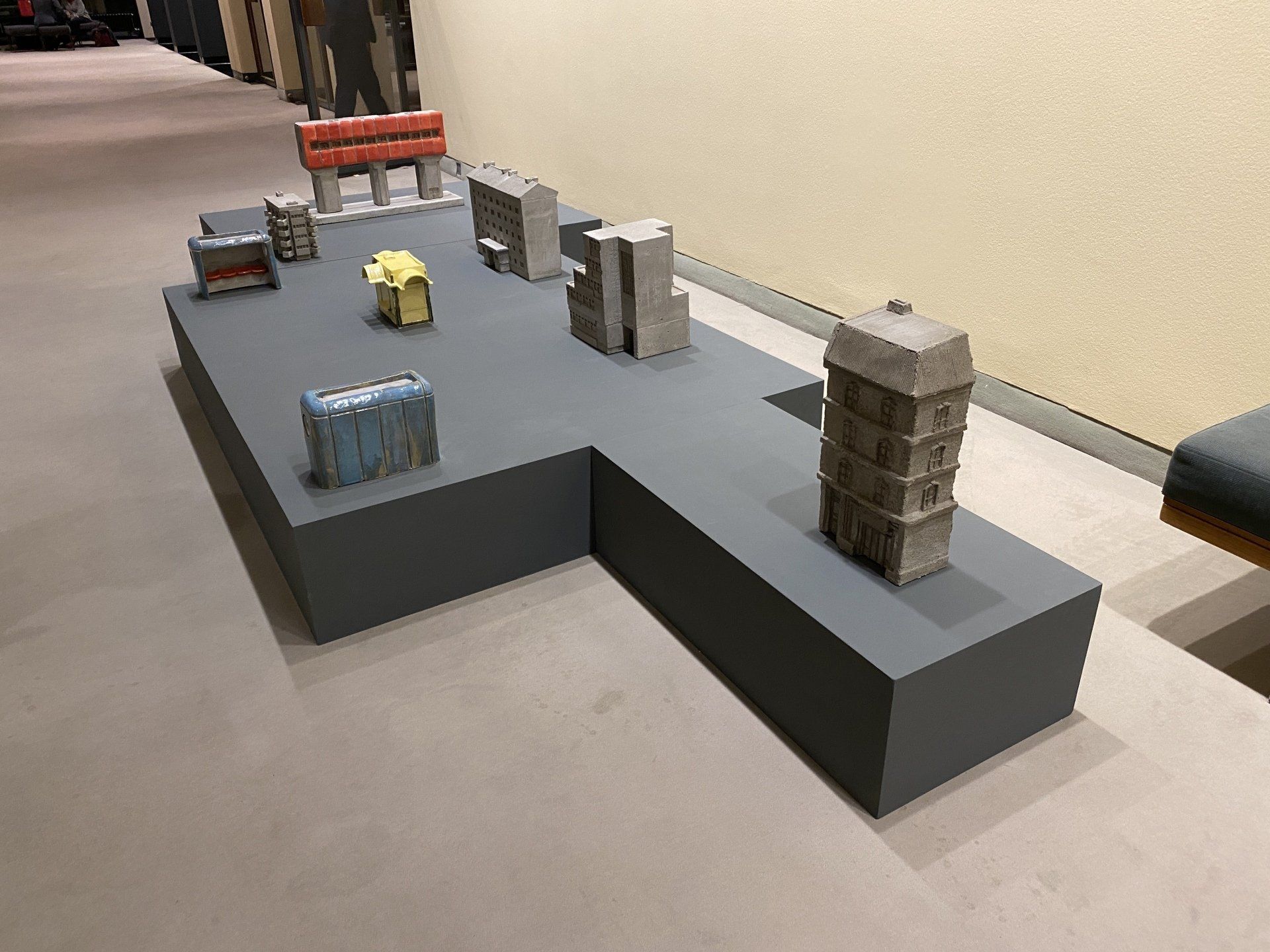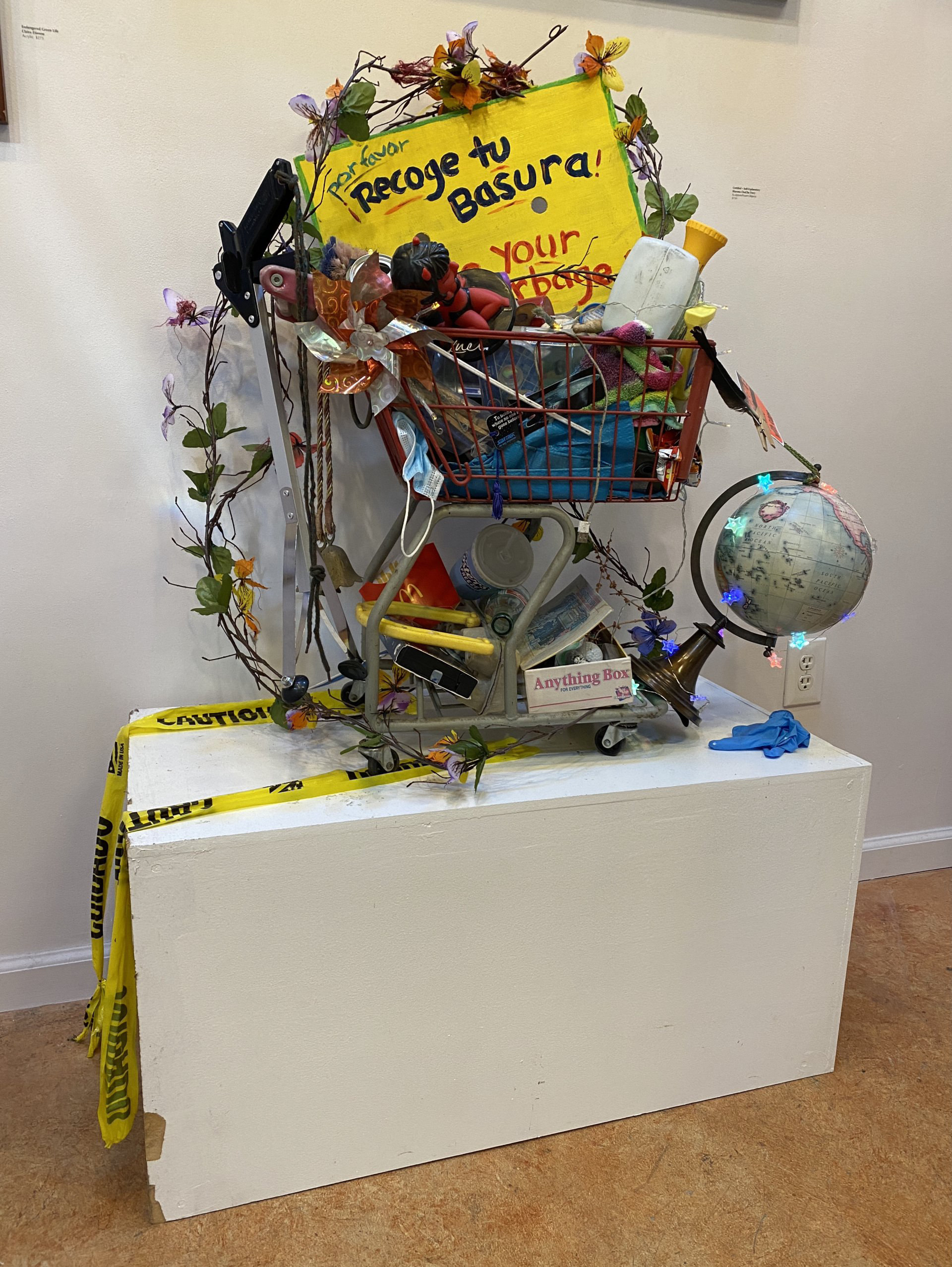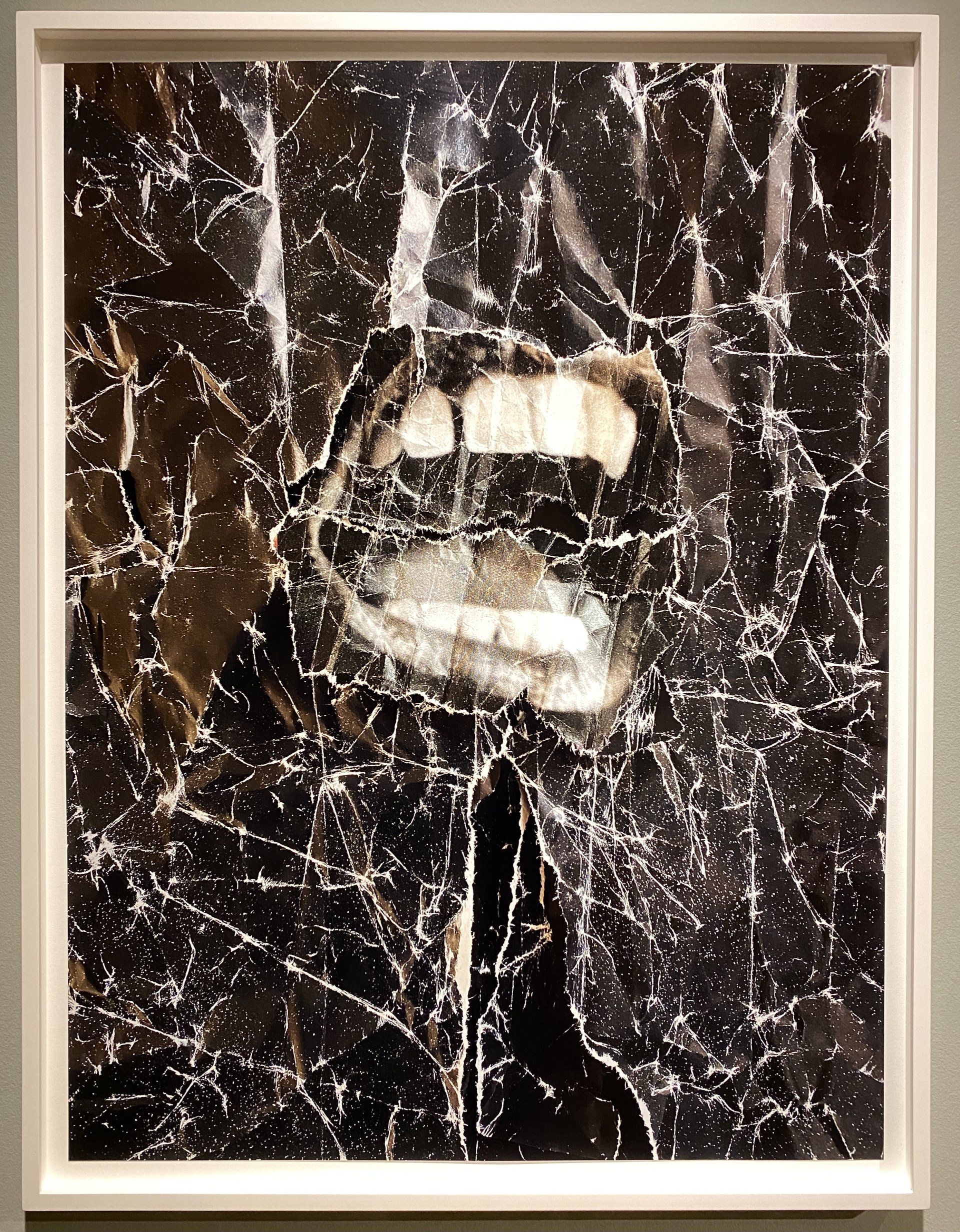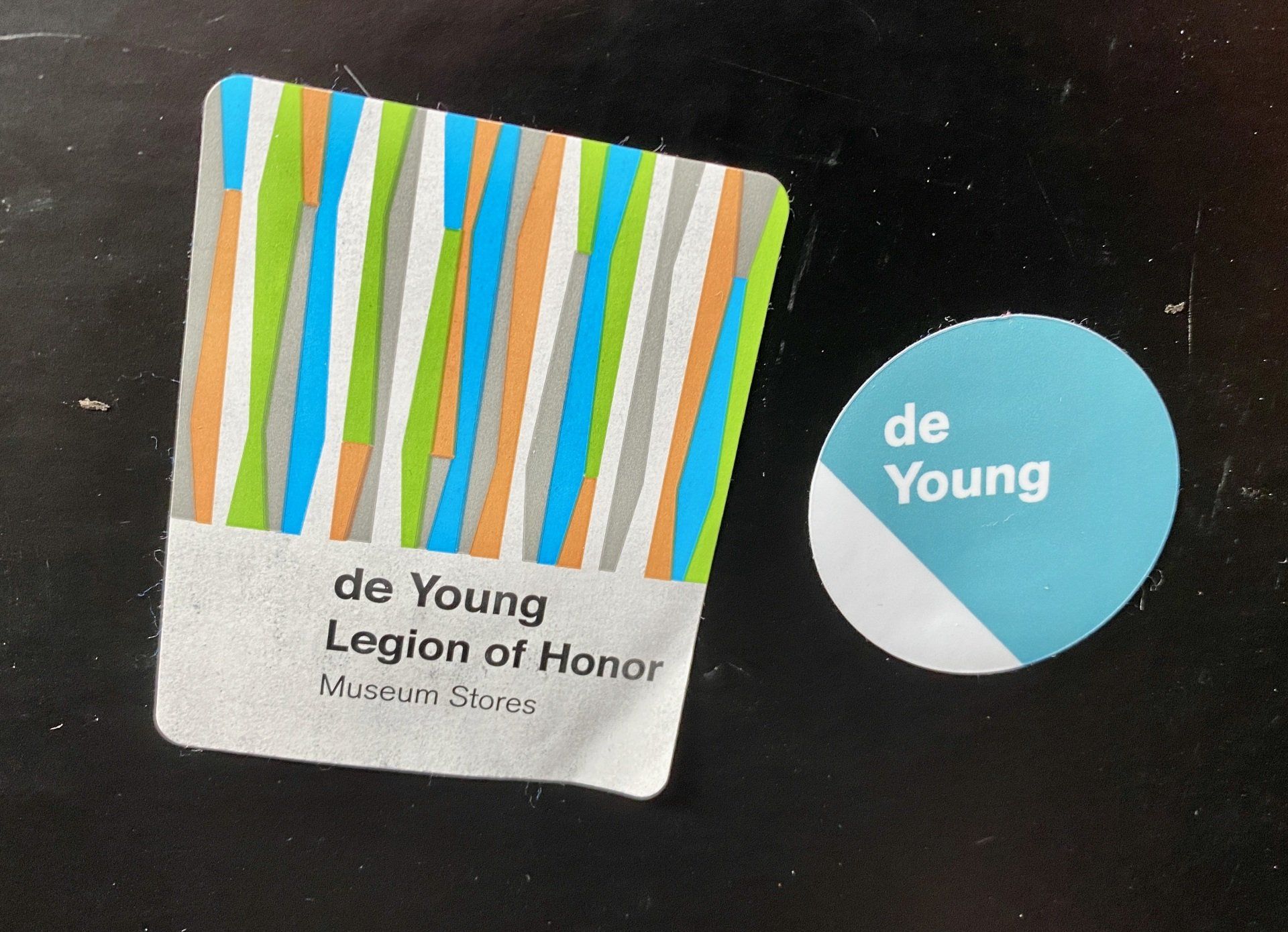Current Issues Take Center Stage at Museum Competition
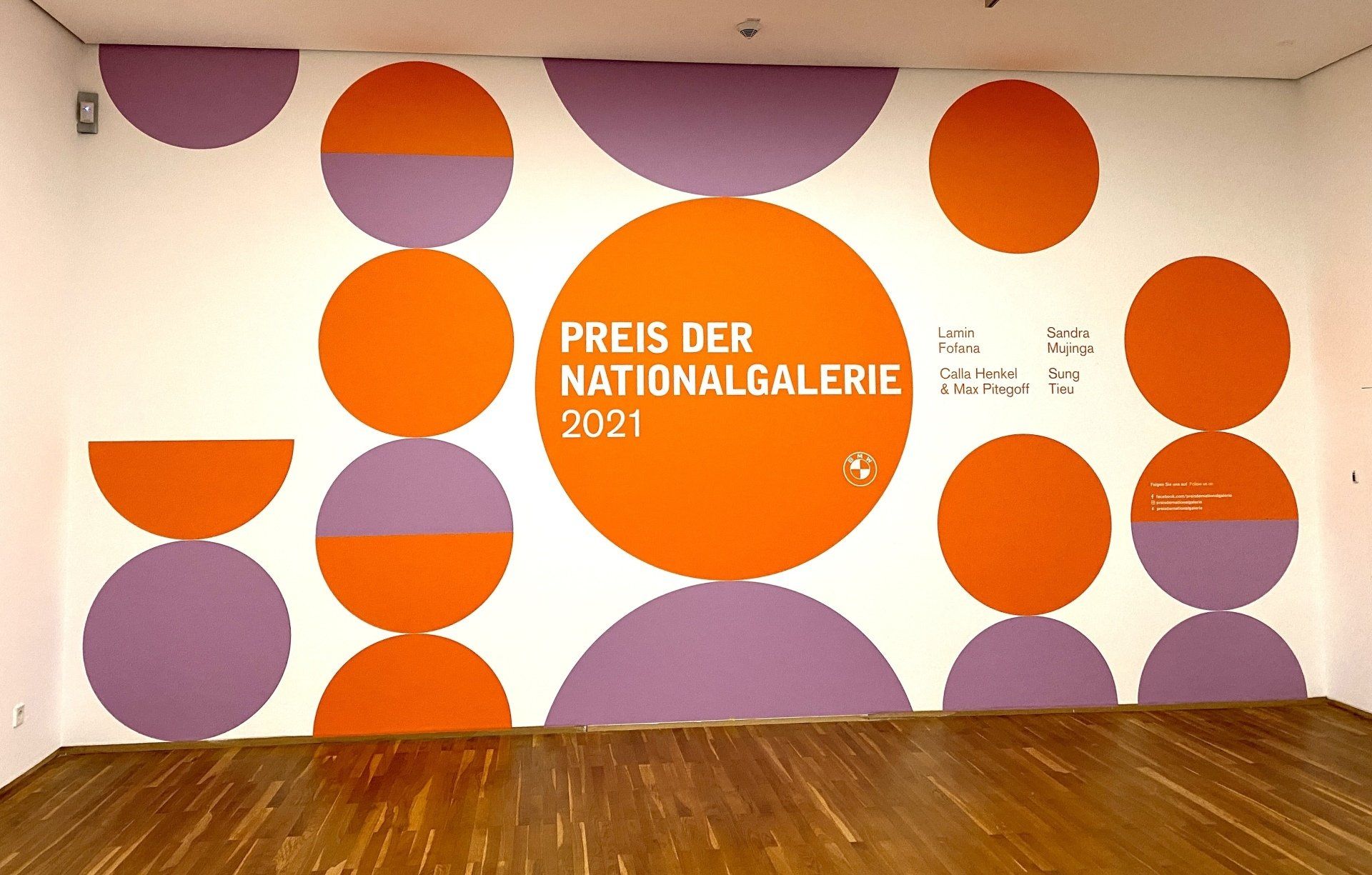
I got my annual pass to Berlin State Museums yesterday! I look forward to sifting through the revolving smorgasbord of exhibits in Berlin this fall/winter. AND while at Hamburger Bahnhof getting my pass, why not take in the Preis der Nationalgalerie show, featuring the four 2021finalists: Lamin Fofana, Sandra Mujinga, Sung Tieu, and the collaborative team of Calla Henkel and Max Pitegoff.
Living as we all do in our own regional art “bubbles,” it truly is an eye-opener to see work being done on a different continent. These four artists focus on social and political issues that are present in galleries and museums in the U.S., however these artists have a slightly different approach. All the work in this exhibit is technically masterful, never preachy, and quite beautiful.
Lamin Fofana’s sound work is at the center of his installations. Projected video and photography, contributed by artists who collaborate with Fofana, take a subordinate role. Usually sound provides a background to an installation, but here the sound - almost music - is as important, if not more, than the visual elements.
The rhythmic sound transports you between three different venues - two rooms where video projections show the human figure along with plants, rocky coastal cliffs, sea stacks, and swirling surf, and another room with photography. All the models in the photographs and videos are young and beautiful Africans - to the point where I had to ask myself, “Is this about Black pride, or is this about beautiful people?” Of course it could be about both simultaneously, but then there is that fragile tipping point where the work gets mentally “interfiled” with Chanel and Gucci ads. Aside from those question marks, Fofana’s sound work powerfully seduces you into another world, and manages to leave space for questions about where colonialism has taken the world, and where it is still influencing the fate of many people.
Collaborators Calla Henkel and Max Pitegoff’s photography comments on the disparity between our material fantasies and aspirations and the shoddiness of the infrastructure that barely holds our world together. The presentation of photography printed on large, grommeted industrial screens, suspended from awning hardware is effective.
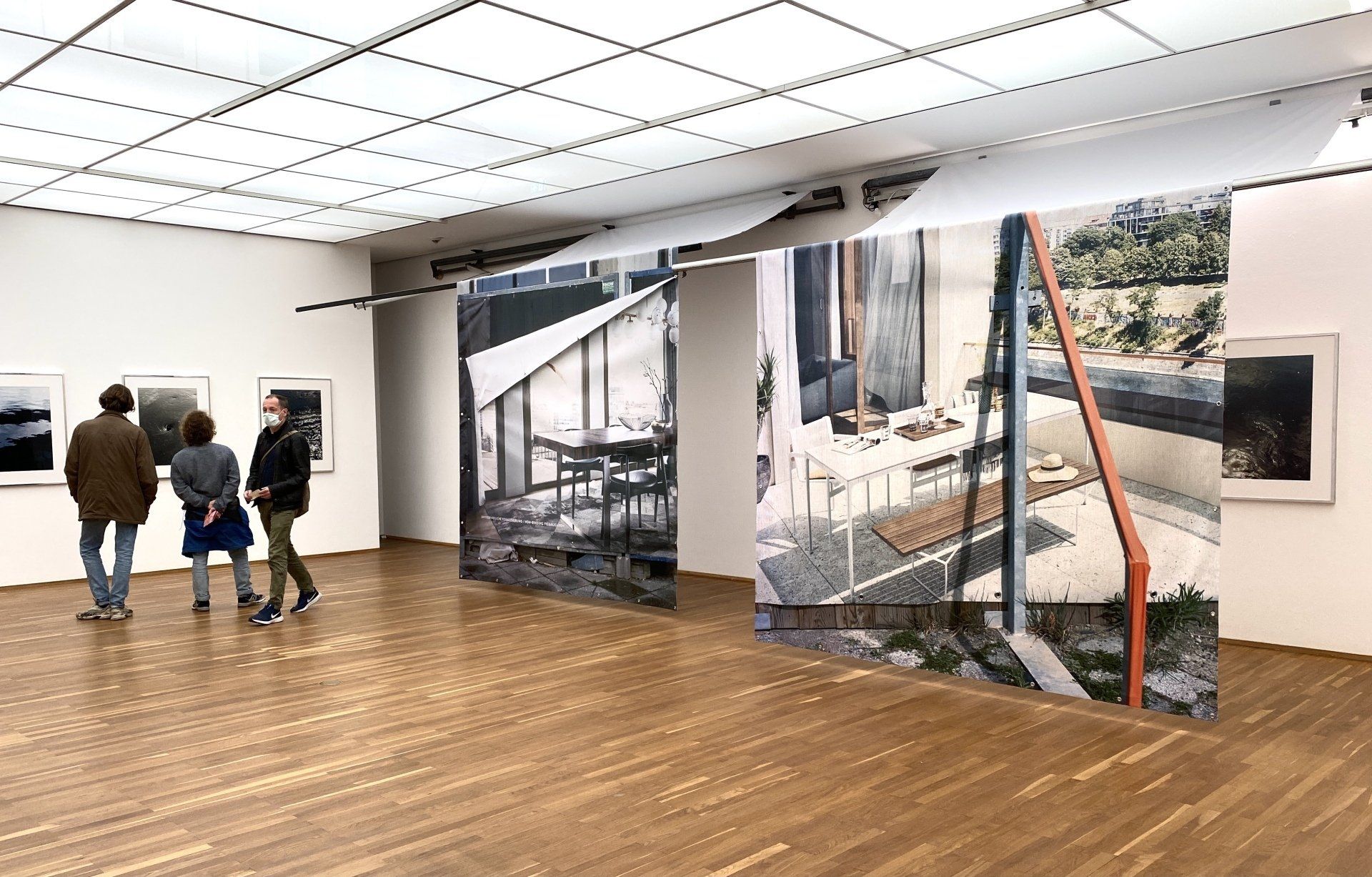
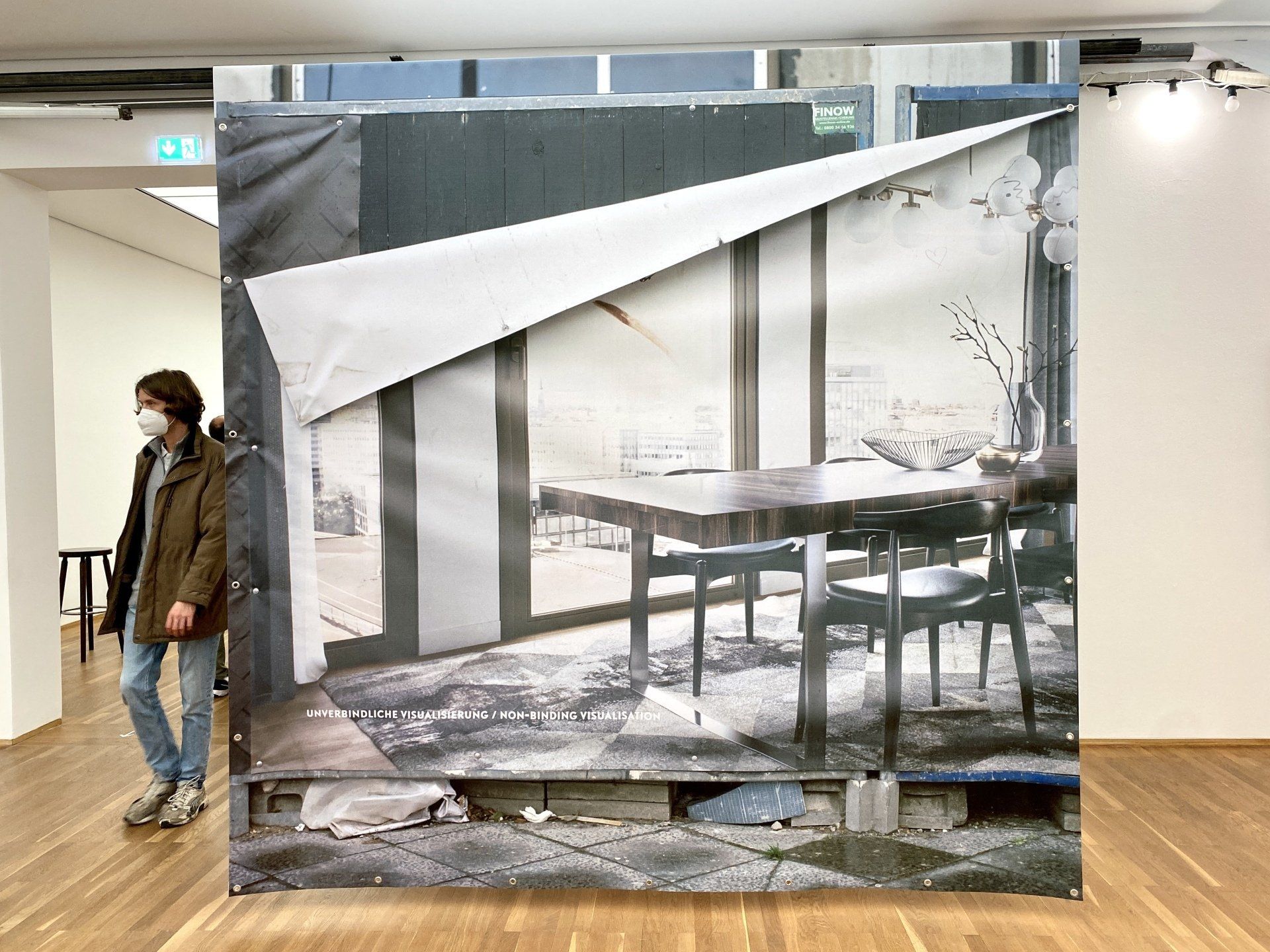
On the walls, behind the awnings, are black and white photographs of what I thought were ocean surf foam and swirling tide waters. However, reading the copy provided by the museum, those soothing water forms are actually shots of sewage in a water treatment plant. I see where Henkel and Pitegoff are coming from, and it makes an interesting and aesthetically beautiful statement about the wastefulness of our consumer society; but it also seems a little thin. Doesn’t every city need a water treatment system? So, in a way I get what they are saying, but in a way not.
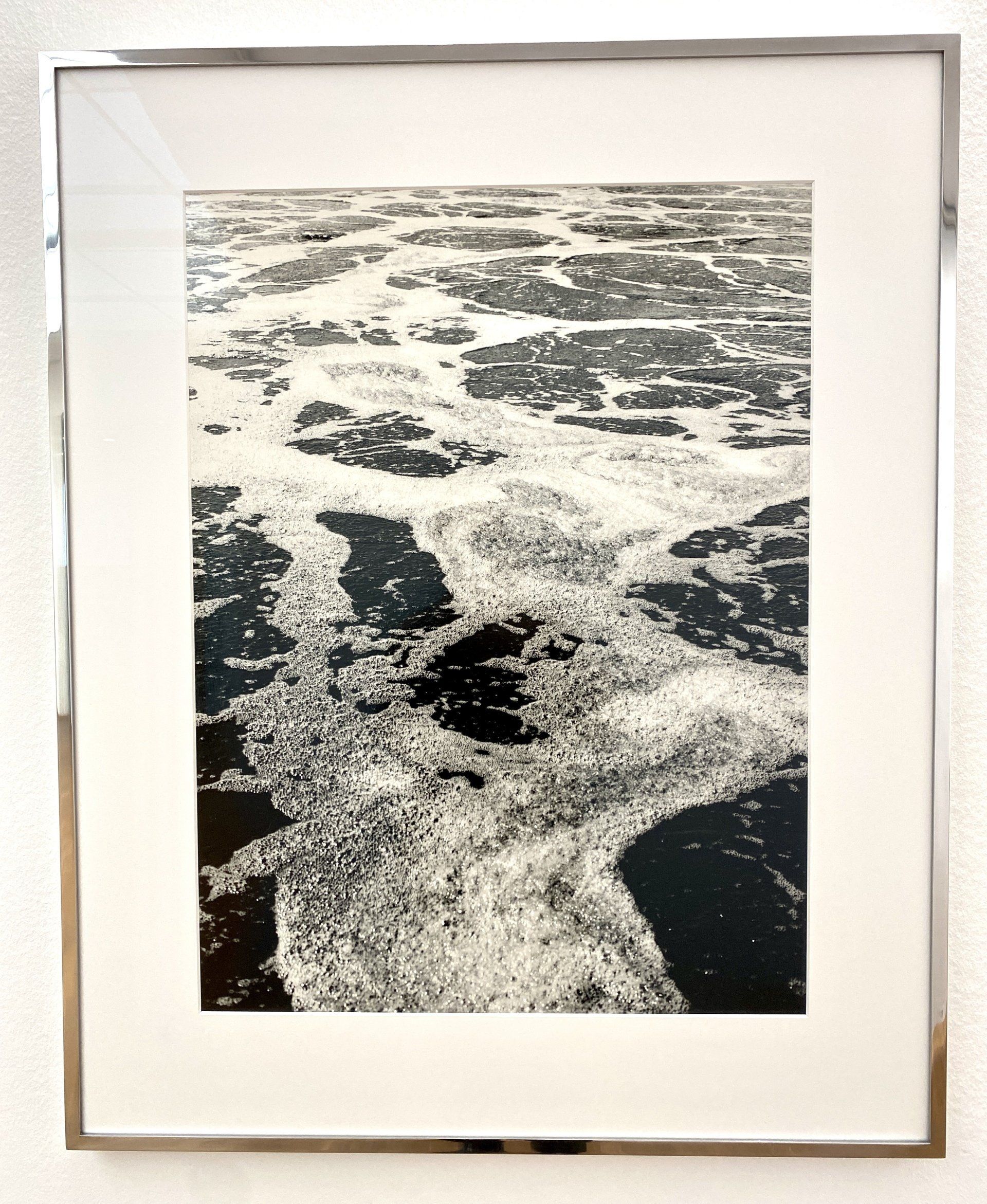
Sandra Mujinga’s ghost figures loom over you in two rooms; one room contains a ghost “ship” consisting of skins of woven fabric, barely clinging to a steel armature. The ghosts are represented by totem-like figures consisting of patterned weavings in grays, charcoals and blacks. Mujinga’s work is haunting, but also in some weird way, welcoming. The giant figures just aren’t there to scare us, but to compassionately warn us to not make the same mistakes over and over again. This work is genuine and real.
The Pries der Nationalgalerie has been awarded to Mujinga, and as winner of the competition, she will have a solo exhibit at Hamburger Bahnhof in 2022, accompanied by a printed catalog.
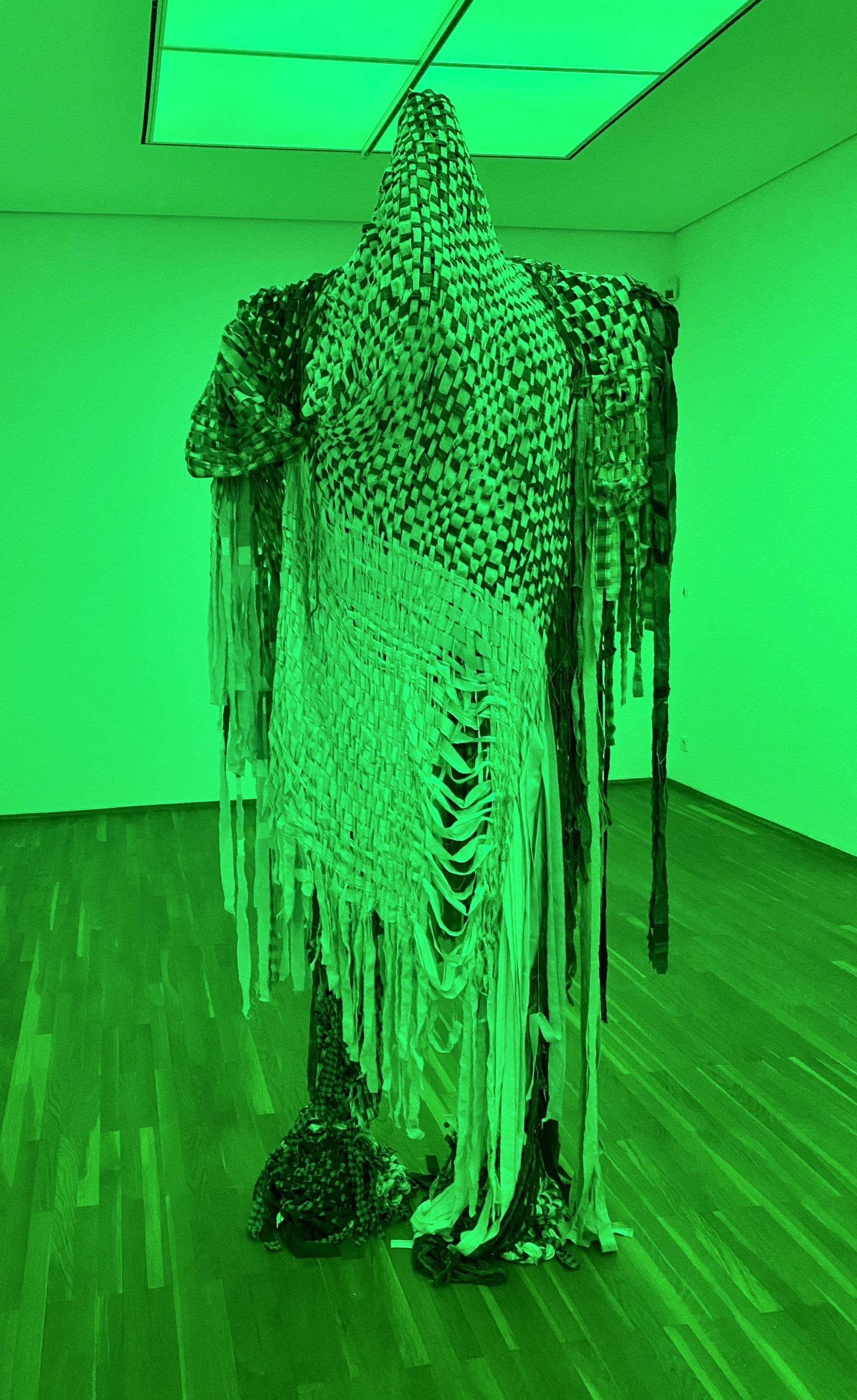
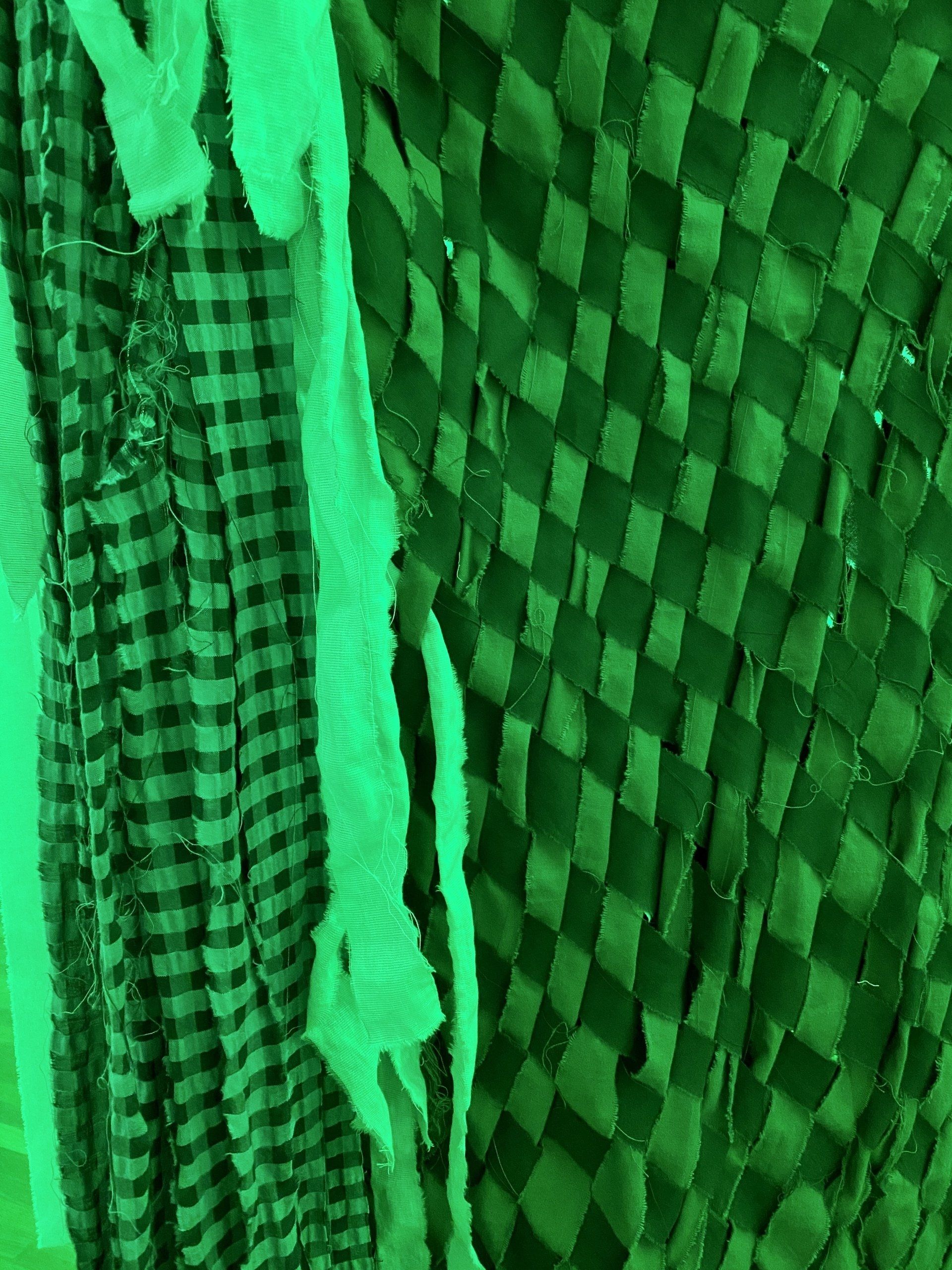
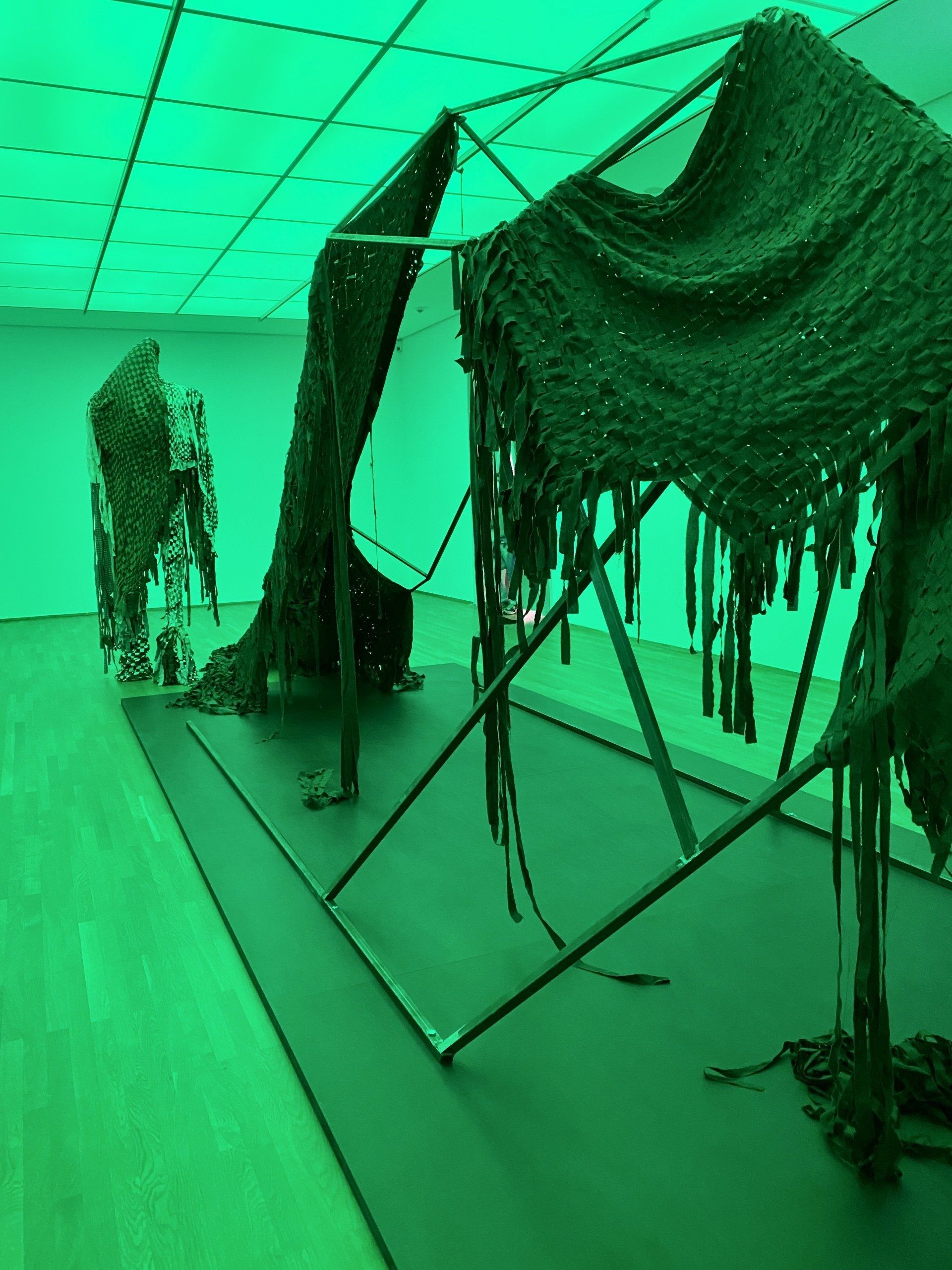
Sung Tieu’s “Song for VEB Stern-Radio Berlin” is about immigration - but the story she tells does not feel personal. Perhaps she is commenting on the impersonal, cold and bureaucratic process of getting migrants from one country to another. The piece is a detached arrangement of lists and electronics in a heaven-like, white environment that leaves you with a sense of weightlessness. You float through this exhibit - with shoes off to preserve the cloud like, white floors. The only touch of humanity is the playful “clip on” ladybugs that sparingly cluster in harmless groups on the inner walls of the exhibit. It’s interesting how this artists translates the experiences of war, immigration and social adjustment into a work that is so beautiful.
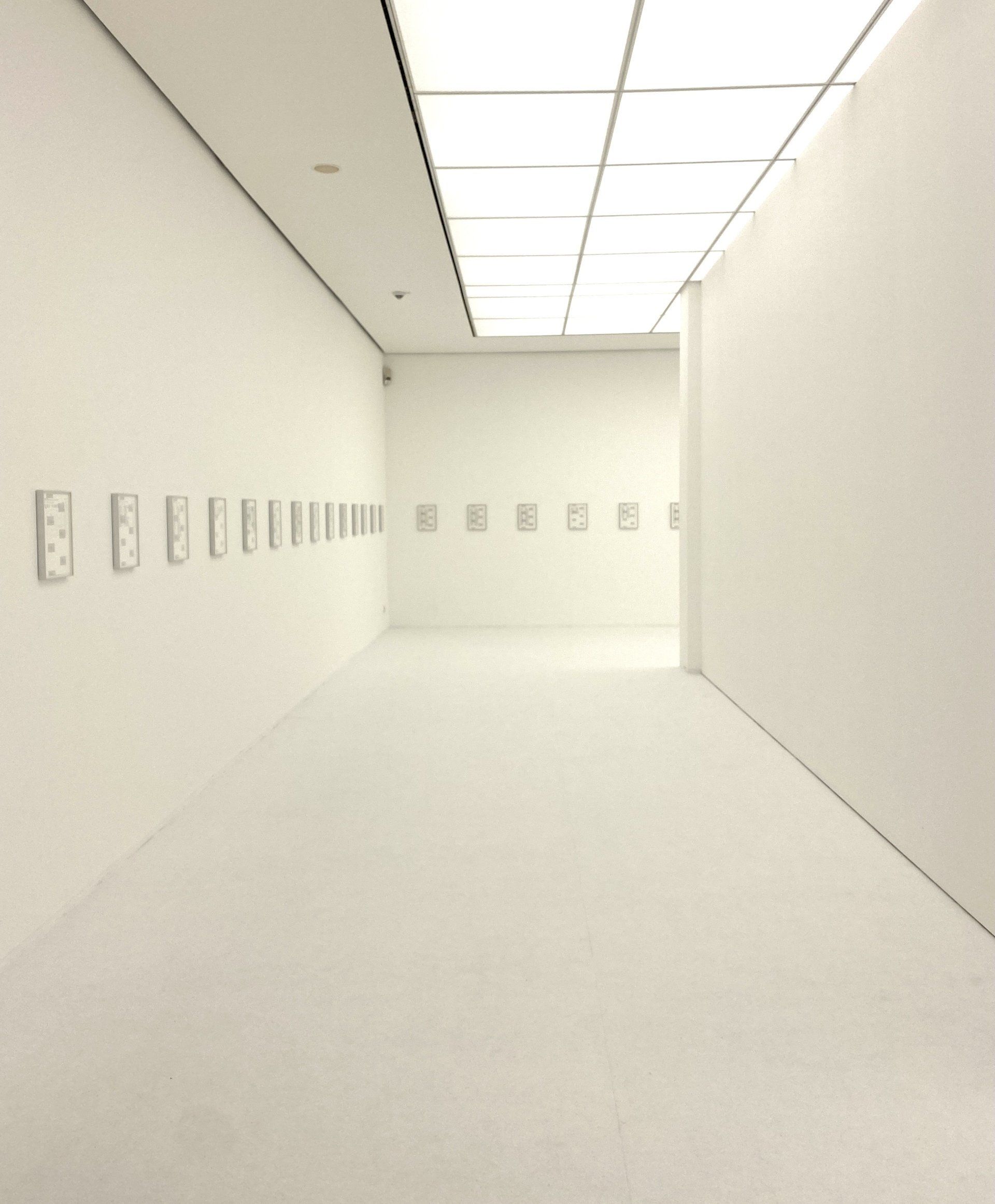
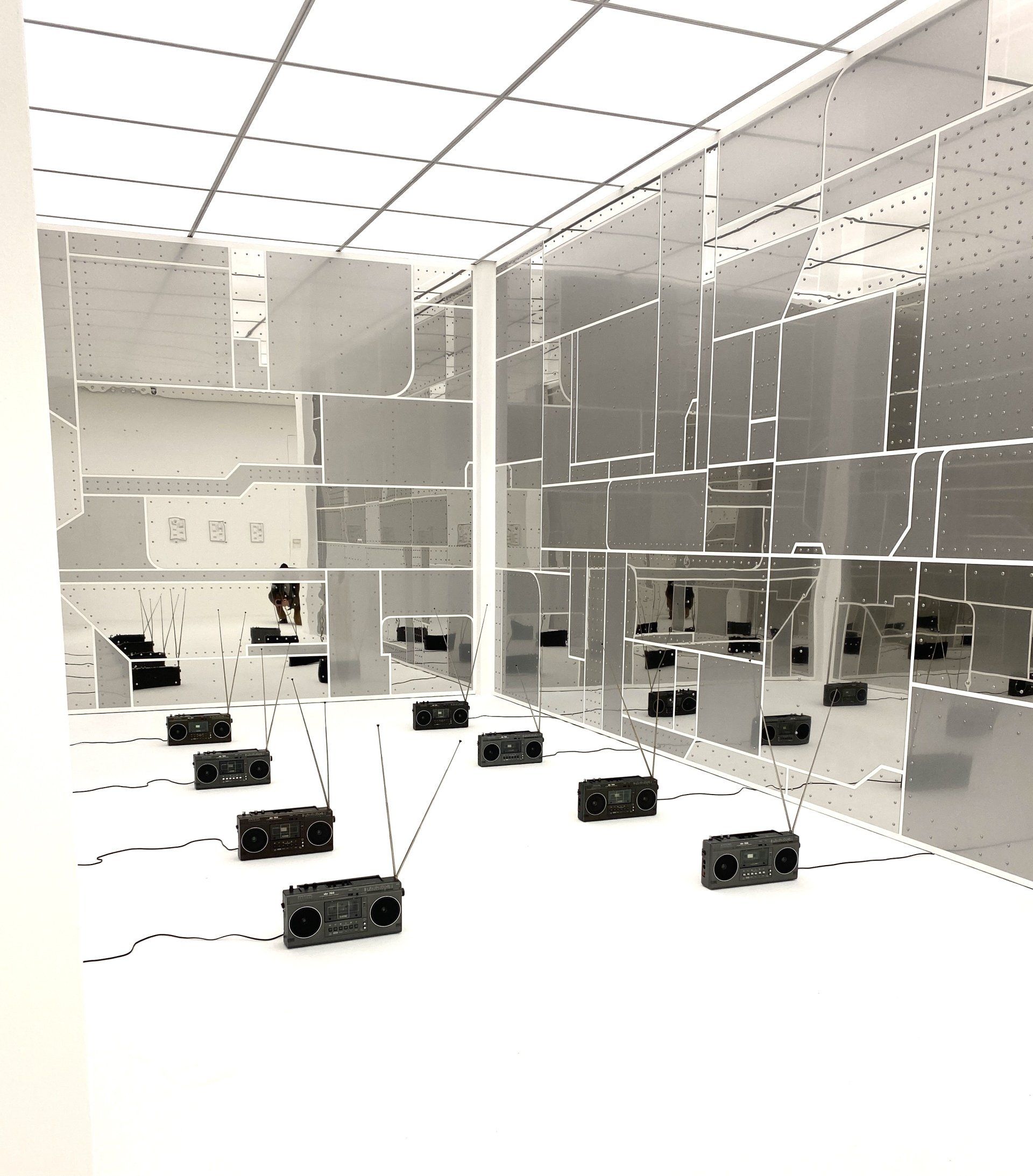
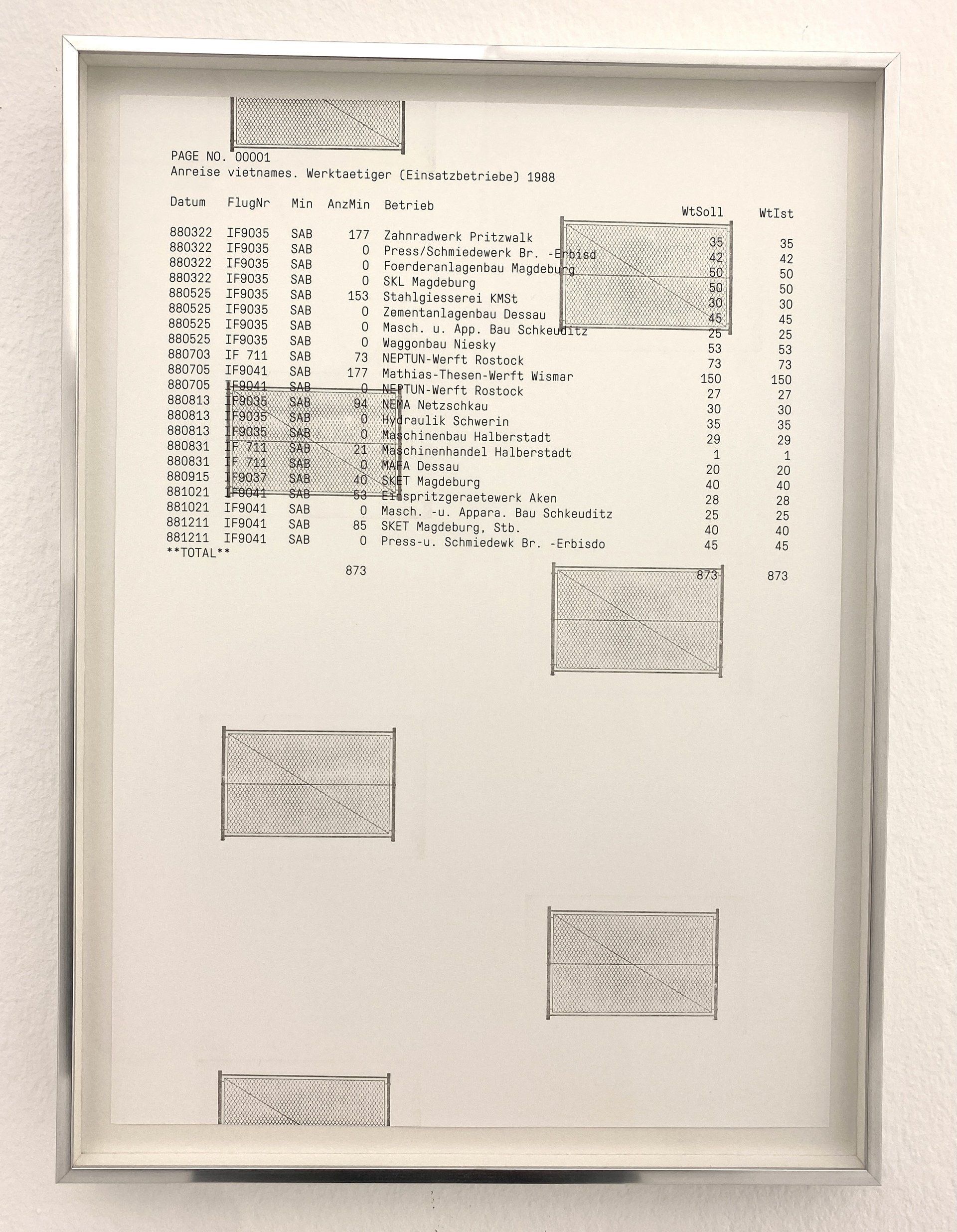
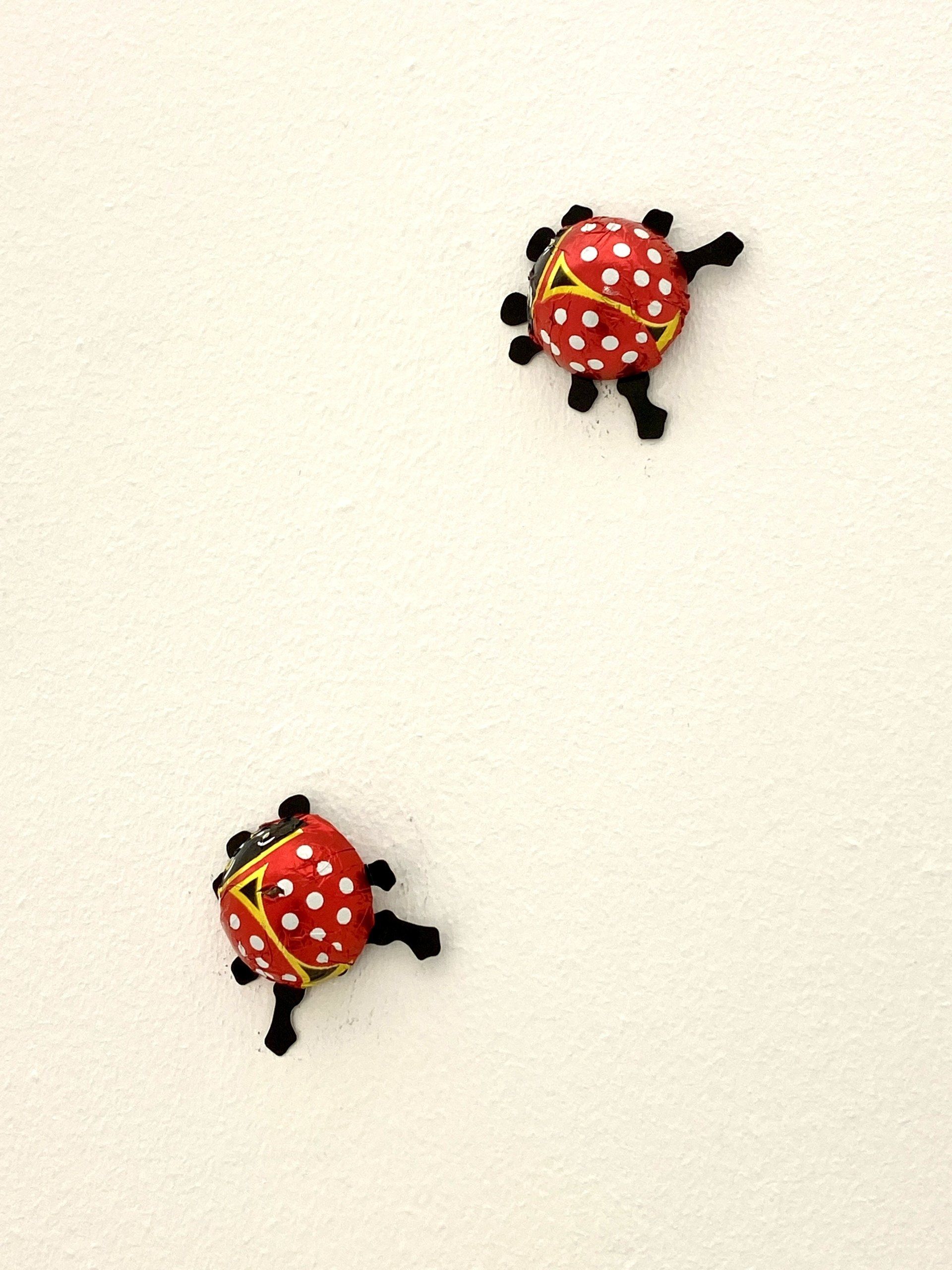
The Pries der Nationalgalerie has been awarded to Sandra Mujinga, and as winner of the competition, she will have a solo exhibit at Hamburger Bahnhof next in 2022 and there will be a printed catalog of the show.

